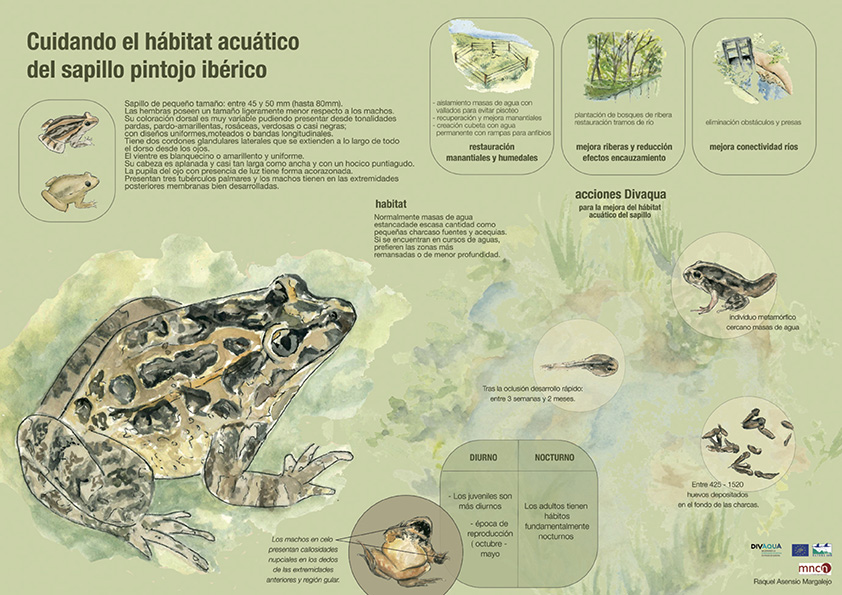Small-sized frog: between 45 and 50 mm (up to 80 mm).
The females are a slightly smaller size than the males. Its dorsal colouring is very variable and may include brownish, yellowish-brown, pinkish, greenish or near-black tones, with uniform, dappled patterns or lengthwise stripes.
It has two lateral glandular cords which extend down the whole of the back from the eyes.
The belly is whiteish or yellowish in colour and smooth.
Its head is flat, almost as long as it is wide, and it has a sharp-pointed snout.
When illuminated, the pupil of the eye is heart-shaped.
It has three palmar tubercles, and the males have well-developed membranes on their hind limbs.
Habitat
Normally in small bodies of standing water such as ponds or springs and streams.
If they are in water courses, they prefer calmer or shallower areas.
Divaqua actions for improvement of the frog’s aquatic habitat:
Restoration of springs and wetlands
Isolation of bodies of water through fencing to prevent trampling
Recovery and improvement of springs
Creation of a water tray with permanent water and ramps for amphibians
Improvement of riverbanks and reduction of diversion effects
Planting of riparian woodlands
Restoration of river sections
Improvement of river connectivity
Removal of barriers and dams
